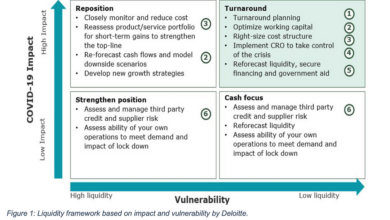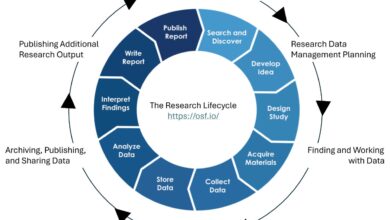
CFO Role in Value Creation A Deep Dive
CFO role in value creation is crucial for any thriving organization. This exploration delves into the multifaceted responsibilities of a Chief Financial Officer, examining how they contribute to overall company success. From strategic financial planning to operational excellence, we’ll unpack the critical role of a CFO in driving value and building shareholder wealth. The CFO is more than just a number cruncher; they’re a strategic partner in growth and profitability.
The core responsibilities of a CFO extend far beyond traditional accounting functions. They’re deeply involved in shaping the company’s financial strategy, ensuring alignment with overall business objectives, and managing financial resources effectively. This involves meticulous financial modeling, forecasting, and budgeting, as well as optimizing capital expenditure decisions and risk management. Transparency in financial reporting is paramount to building stakeholder confidence and attracting investment.
Defining the CFO Role in Value Creation
The Chief Financial Officer (CFO) is a critical leadership position in any organization, playing a multifaceted role extending far beyond traditional financial management. Their contributions to value creation are integral to the company’s overall success, encompassing strategic planning, resource allocation, and risk mitigation. This role requires a deep understanding of the business, financial markets, and the competitive landscape.The CFO’s role is evolving from a primarily accounting-focused function to one that is deeply involved in driving business strategy and value creation.
This evolution requires CFOs to be adept at translating business objectives into financial targets and measuring the effectiveness of strategies. They need to understand not only the financial statements but also the operational drivers behind them.
Core Responsibilities of a CFO
The CFO is responsible for overseeing all financial aspects of the company, including budgeting, forecasting, financial reporting, and compliance. They also play a crucial role in strategic planning, risk management, and investor relations. This involves translating strategic goals into actionable financial plans and ensuring the organization has the resources to achieve them.
Facets of Value Creation
Value creation in a company is multifaceted, encompassing various elements such as operational efficiency, customer satisfaction, innovation, and market leadership. These elements intertwine and contribute to a positive return on investment (ROI) for shareholders. Value creation isn’t limited to financial returns; it also includes non-financial aspects such as brand reputation, employee satisfaction, and environmental sustainability.
CFO’s Contribution to Value Creation
A CFO contributes to value creation by aligning financial strategies with overall business objectives. This involves:
- Developing and implementing financial strategies that support the company’s strategic goals. This includes meticulous budgeting, forecasting, and financial reporting to effectively manage resources and assess performance against targets.
- Optimizing resource allocation to maximize return on investment (ROI). This entails making informed decisions on capital expenditures, investments, and operational expenses, considering the potential long-term impact on the company’s financial health and performance.
- Identifying and mitigating financial risks. A critical aspect of value creation is anticipating and mitigating financial risks, such as market fluctuations, regulatory changes, and operational inefficiencies. This involves proactive risk assessment and development of mitigation strategies.
Comparing the CFO Role with Other Key Leadership Positions
The CFO’s role differs from other key leadership positions, such as the CEO or COO, in its primary focus on the financial aspects of the business. While the CEO sets the overall strategic direction, the CFO ensures the financial feasibility and sustainability of those strategies. The COO focuses on operational efficiency, while the CFO ensures the financial resources are available to support those operational strategies.
The CFO’s role is to provide the financial perspective and support to enable the company to achieve its overall strategic objectives.
CFO’s Value-Creation Activities Framework
A logical framework for organizing the CFO’s value-creation activities involves these key steps:
- Strategic Alignment: The CFO ensures the financial strategy is fully aligned with the overall business strategy, providing financial support to achieve business objectives. This is done by working closely with the CEO and other leadership teams to understand their vision and translate it into actionable financial plans.
- Resource Optimization: The CFO’s role is to optimize resource allocation to maximize return on investment (ROI) and ensure the efficient use of financial capital. This involves careful analysis of potential investments and projects to determine their feasibility and profitability.
- Risk Management: A key aspect of value creation is proactive risk mitigation. The CFO assesses and manages various financial risks, from market fluctuations to regulatory changes, and implements appropriate strategies to minimize their impact on the organization’s financial performance.
- Performance Measurement: The CFO establishes key performance indicators (KPIs) to track the effectiveness of the financial strategy and measure its impact on value creation. This involves regular monitoring and reporting to identify areas of improvement and adjust strategies as needed.
Strategic Financial Planning for Value

A CFO’s role extends far beyond simply managing the numbers. Effective strategic financial planning is crucial for driving value creation within an organization. It’s about aligning financial decisions with the overarching strategic goals, ensuring resources are allocated efficiently, and maximizing returns on investments. This involves a proactive approach to forecasting, budgeting, and modeling, all with the ultimate aim of increasing shareholder value and achieving sustainable growth.Strategic financial planning isn’t just about the numbers; it’s about understanding the narrative behind them.
It’s about anticipating market trends, identifying opportunities, and mitigating potential risks. By proactively addressing these factors, a CFO can steer the organization towards a brighter financial future.
Financial Modeling for Value Creation
Financial modeling is a powerful tool for value creation. It allows CFOs to project future performance, assess the impact of different strategic initiatives, and identify potential bottlenecks or risks. Models can range from simple projections to complex simulations, each tailored to specific needs. By incorporating various scenarios, CFOs can anticipate potential challenges and devise contingency plans.A well-constructed financial model, for example, could project the impact of a new product launch on revenue, profitability, and cash flow.
This allows for informed decision-making, enabling the organization to allocate resources effectively and potentially maximizing returns.
Forecasting and Budgeting for Value Creation
Accurate forecasting and budgeting are essential for effective resource allocation and performance measurement. Forecasting, which anticipates future financial outcomes, provides a roadmap for the organization. Budgets, on the other hand, act as a detailed financial plan that guides spending and revenue targets.Forecasting helps identify potential challenges and opportunities, allowing for proactive responses and optimized resource allocation. Budgeting further refines these forecasts, outlining specific financial targets for each department or project.
By aligning forecasts and budgets with strategic objectives, the CFO can ensure that the organization is on track to achieve its goals. A strong example would be a tech company forecasting the revenue generated by a new software release, then budgeting the marketing and development costs to match.
Key Financial Metrics for Measuring Value Creation
Several key financial metrics can be used to assess the success of strategic financial planning in driving value creation. These metrics provide a quantifiable way to measure progress towards strategic objectives.
- Return on Investment (ROI): This metric measures the profitability of an investment relative to its cost. A high ROI signifies efficient allocation of resources.
- Net Present Value (NPV): NPV calculates the present value of future cash flows, enabling a comparison of different investment options. A positive NPV suggests a potentially profitable investment.
- Earnings Per Share (EPS): EPS indicates the profitability of a company from the perspective of its shareholders.
- Revenue Growth Rate: This metric shows the rate at which a company’s revenue is increasing over time, indicating the success of its business strategy.
- Operating Margin: This measures the percentage of revenue that remains after deducting operating expenses, indicating operational efficiency.
These metrics offer a comprehensive view of the financial health and performance of the organization, allowing the CFO to evaluate the effectiveness of their strategic plans.
Aligning Financial Plans with Strategic Objectives
Developing a framework for aligning financial plans with strategic objectives is critical for maximizing value creation. This framework should be adaptable and flexible enough to accommodate changes in the business environment.
- Establish Clear Strategic Objectives: Define specific, measurable, achievable, relevant, and time-bound (SMART) objectives.
- Develop Financial Models: Create models that reflect the strategic objectives and consider potential risks and opportunities.
- Define Key Performance Indicators (KPIs): Identify KPIs that align with strategic objectives and track their performance.
- Regular Review and Adjustment: Regularly review the financial plans and make adjustments as needed to stay aligned with the evolving strategic landscape.
By establishing clear links between financial plans and strategic goals, a CFO can ensure that resources are allocated effectively and that the organization consistently drives value creation. This process also ensures accountability and transparency within the organization.
Managing Financial Resources for Value
The CFO’s role extends far beyond traditional accounting functions. Effective financial management is crucial for driving value creation. This involves strategically allocating resources, optimizing capital expenditure, mitigating financial risks, and maximizing returns on investments. Ultimately, these actions contribute to a company’s long-term success and profitability.Optimizing resource allocation is a cornerstone of value creation. A well-defined financial strategy ensures that resources are directed towards projects and initiatives that deliver the highest potential return.
This involves careful analysis of market trends, competitive landscapes, and internal operational efficiencies to prioritize investments and resource allocation decisions.
Effective Resource Allocation
A well-defined financial strategy is paramount to ensure that resources are deployed towards projects with the highest potential return. This necessitates a thorough analysis of market trends, competitive landscapes, and internal operational efficiencies to effectively prioritize investments and resource allocation. Successful resource allocation hinges on accurate forecasting, meticulous budgeting, and a clear understanding of the company’s strategic objectives. This allows for focused investment in high-growth areas while simultaneously mitigating risks in areas with lower potential.
Optimizing Capital Expenditure Decisions
Capital expenditure (CAPEX) decisions significantly impact a company’s future profitability and growth. A CFO plays a critical role in evaluating potential CAPEX projects, ensuring they align with the company’s strategic goals and contribute to value creation. This involves detailed analysis of the projected return on investment (ROI) for each project, considering factors such as projected cash flows, economic conditions, and technological advancements.
A robust process for evaluating CAPEX proposals helps prioritize investments that deliver the highest return on capital. For instance, a thorough analysis of a new production line’s ROI, considering factors like projected sales volumes, production costs, and maintenance expenses, is essential before making a CAPEX decision.
Financial Risk Management
Effective financial risk management is integral to value creation. A CFO’s role involves identifying and mitigating potential financial risks that could jeopardize the company’s profitability and stability. This encompasses a wide range of risks, from market fluctuations to credit risks, operational disruptions, and regulatory changes. Proactive risk assessment, combined with appropriate hedging strategies, is critical to mitigating the impact of potential losses and maintaining financial stability.
A company that has robust financial risk management processes in place is more likely to weather economic storms and continue to create value.
Investment Strategies for Maximizing Value
Various investment strategies can be employed to maximize value creation. Each strategy carries unique risk-return profiles. A diversified portfolio approach, for example, spreads investment across various asset classes, reducing overall risk. On the other hand, a concentrated approach focuses on a limited number of high-potential investments. Strategic investment decisions need to align with the company’s risk tolerance and long-term financial objectives.
Comparing and contrasting these strategies, in light of the specific company context, is crucial to making informed decisions.
Managing Working Capital for Value Enhancement
Managing working capital effectively is crucial for optimizing operational efficiency and enhancing value. This encompasses managing inventory levels, accounts receivable, and accounts payable. Optimizing these areas can significantly improve cash flow, freeing up resources for reinvestment and value-added activities. For example, implementing just-in-time inventory management systems can reduce holding costs and improve efficiency. Efficient credit policies can also help minimize the risk of bad debts.
A company that effectively manages its working capital is better positioned to achieve its financial goals and create value.
Financial Reporting and Transparency for Value
Financial reporting is more than just a regulatory requirement; it’s a critical tool for driving value creation within an organization. Effective communication of financial performance builds trust with stakeholders, attracts investment, and ultimately shapes the company’s future trajectory. Transparency in financial reporting is no longer a luxury but a necessity in today’s interconnected world.Accurate and timely financial reporting is paramount for informed decision-making.
Check what professionals state about cima ethics confidentiality rules and its benefits for the industry.
Investors, creditors, and even employees rely on these reports to assess the health and viability of the company. When financial information is presented clearly and consistently, it fosters a culture of accountability and trust. A strong financial reporting system is a cornerstone of a successful and sustainable business.
Communicating Financial Performance Effectively
Effective financial communication goes beyond simply presenting numbers. It requires a clear and concise narrative that connects the financial data to the overall strategic goals of the organization. This involves using visualizations, like charts and graphs, to present complex data in a digestible format. Key performance indicators (KPIs) should be highlighted to show progress towards objectives. The use of industry benchmarks can provide context and allow for comparisons, helping stakeholders understand the company’s performance relative to its peers.
Transparent Financial Reporting and Stakeholder Confidence
Transparency in financial reporting builds stakeholder confidence. When stakeholders understand the financial health and performance of a company, they are more likely to invest, lend, or support the organization. Open communication about financial challenges and opportunities fosters trust and strengthens relationships. This trust extends to employees, who are more likely to be motivated and engaged when they understand the financial situation and their role in achieving company goals.
Financial Reporting and Investment Attraction
Investors are constantly seeking opportunities to deploy capital effectively. Clear and transparent financial reporting plays a crucial role in attracting investment. Potential investors scrutinize financial statements, seeking evidence of profitability, growth potential, and financial stability. Detailed and well-structured financial reports showcase the company’s ability to generate returns and manage risk effectively. Strong financial reporting helps convince investors that the company is a sound investment.
Importance of Accurate and Timely Financial Reporting
Accurate and timely financial reporting is fundamental to effective decision-making. Delayed or inaccurate reports can lead to flawed analyses and potentially misguided strategies. In a dynamic business environment, up-to-date information is critical for reacting swiftly to market changes and making adjustments to achieve goals. This timely and accurate information empowers the leadership team to make critical decisions that optimize performance.
Role of External Audits and Compliance in Value Creation
External audits and compliance are vital components of value creation. Audits provide an independent assessment of financial statements, ensuring accuracy and reliability. This verification process reassures stakeholders and demonstrates the company’s commitment to ethical practices and transparency. Compliance with regulations is crucial for maintaining operational integrity and avoiding potential penalties or reputational damage. Adherence to financial regulations builds trust and reinforces the company’s commitment to ethical conduct.
It helps to build a strong reputation and ensures that the company operates within the boundaries of the law.
Operational Excellence and Value Creation
A CFO’s role in value creation extends beyond traditional financial functions. A key component involves driving operational excellence, recognizing that efficient operations directly translate to stronger financial performance. This often involves a shift in mindset, moving from simply managing costs to actively seeking opportunities for process improvements and leveraging technology to enhance efficiency.Operational efficiency is intrinsically linked to financial performance.
Increased efficiency leads to reduced costs, improved margins, and ultimately, higher profitability. A streamlined operation not only enhances bottom-line results but also frees up resources to invest in growth initiatives. A CFO who understands this connection can effectively guide the organization towards a more sustainable and profitable future.
The Connection Between Operational Efficiency and Financial Performance
Operational efficiency directly impacts financial performance. Reduced waste, optimized processes, and minimized errors translate to lower costs and increased output. This, in turn, leads to higher profitability and return on investment (ROI). For example, a company that reduces its production cycle time can produce more goods in the same timeframe, increasing revenue and ultimately boosting profitability.
Cost Reduction Strategies for Value Creation
Cost reduction strategies are vital for enhancing value creation. These strategies can encompass various approaches, including process reengineering, automation, and supplier negotiations. Focusing on non-value-added activities is crucial. Identifying and eliminating unnecessary steps in processes can lead to significant cost savings. A thorough analysis of expenses is essential to pinpoint areas for potential cost reductions.
Process Improvement Initiatives and Value Creation
Process improvement initiatives directly contribute to value creation by enhancing efficiency and effectiveness. These initiatives involve identifying bottlenecks, streamlining workflows, and improving communication. Implementing Six Sigma methodologies can lead to significant improvements in process efficiency and quality. A good example is a company implementing a lean manufacturing system, which focuses on eliminating waste and maximizing efficiency in production processes.
By reducing wasted materials and time, companies can lower production costs and increase output, improving overall value creation.
Leveraging Technology for Enhanced Operational Efficiency
Technology plays a crucial role in enhancing operational efficiency. Automation tools, data analytics, and cloud computing can optimize processes and reduce costs. Companies can use data analytics to identify trends and patterns in their operations, enabling them to make data-driven decisions that lead to improved efficiency. For example, a company using real-time data analytics to monitor production equipment can quickly identify and address any issues, minimizing downtime and improving overall output.
Examples of Successful Operational Improvements and Their Impact on Value Creation
Successful operational improvements frequently lead to substantial value creation. Consider a company that implemented a new inventory management system. This led to reduced inventory holding costs, minimized stockouts, and improved cash flow. The impact on value creation is clear – reduced costs and improved cash flow contribute to higher profitability. Another example is a company that streamlined its customer service processes, reducing call handling times and improving customer satisfaction.
This resulted in increased customer retention and loyalty, further enhancing value creation. In these examples, the improvements directly translated into tangible financial benefits, demonstrating the strong link between operational excellence and value creation.
Innovation and Value Creation
The CFO’s role is evolving beyond traditional financial functions. Today, a forward-thinking CFO recognizes that innovation is a critical driver of shareholder value. This involves not just evaluating existing projects, but proactively identifying and supporting new opportunities. This requires a shift in mindset, embracing risk, and understanding how financial resources can be leveraged to fuel innovation.Innovation is not just about groundbreaking technology; it encompasses new processes, improved products, and innovative business models.
A successful CFO understands that fostering a culture of innovation requires a holistic approach, encompassing strategic financial planning, resource allocation, and a commitment to transparency and accountability.
CFO’s Role in Supporting Innovation Initiatives
The CFO plays a vital role in the innovation process. Beyond traditional financial oversight, the CFO acts as a strategic partner, evaluating the financial viability of new projects, and ensuring the necessary resources are available. This includes securing funding, managing risks, and monitoring performance against financial targets.
Driving Investment in New Technologies
CFOs can drive investment in new technologies by demonstrating their potential return on investment (ROI). They can achieve this by:
- Conducting thorough due diligence on potential technological investments, analyzing the potential for cost savings and revenue generation.
- Developing financial models that project the ROI of new technologies, considering both short-term and long-term implications.
- Identifying strategic partnerships that can leverage existing expertise and resources to accelerate the implementation of new technologies.
- Presenting compelling business cases to senior management, highlighting the potential for value creation and outlining potential risks and mitigation strategies.
Evaluating the Financial Viability of New Projects
Evaluating the financial viability of new projects requires a comprehensive approach. Key considerations include:
- Market analysis to assess demand and potential market share.
- Detailed cost analysis, including development costs, production costs, and marketing expenses.
- Revenue projections, factoring in pricing strategies, sales forecasts, and potential market penetration.
- Risk assessment, identifying potential threats and developing mitigation strategies.
- Sensitivity analysis, exploring how changes in key variables (e.g., costs, demand) affect the project’s profitability.
Impact of Innovation on Shareholder Value
Innovation directly impacts shareholder value by increasing profitability, expanding market share, and creating new revenue streams. Innovative companies are often better positioned to adapt to changing market conditions and emerging technologies.
Fostering a Culture of Innovation
A culture of innovation within an organization requires a supportive environment. CFOs can foster this by:
- Creating clear communication channels for sharing ideas and feedback.
- Establishing dedicated innovation teams or programs to encourage experimentation and development.
- Providing resources and support for employees to pursue innovative ideas.
- Recognizing and rewarding innovative contributions.
- Embracing calculated risk-taking.
Building a High-Performing Finance Team

A strong finance team is the cornerstone of a successful organization. It’s not just about crunching numbers; it’s about strategic insight, proactive problem-solving, and a deep understanding of the business’s overall objectives. A high-performing finance team translates financial data into actionable strategies that drive value creation. This is crucial for organizations seeking to achieve sustainable growth and competitiveness.The CFO plays a pivotal role in cultivating this team.
Developing and motivating a finance team requires a multifaceted approach encompassing clear communication, empowering delegation, and recognizing individual contributions. A supportive and collaborative environment encourages creativity and fosters innovation, which are essential for value creation.
Importance of a High-Performing Finance Team
A high-performing finance team is vital for translating financial data into strategic insights and driving value creation. Their expertise in financial analysis, forecasting, and risk management enables the organization to make informed decisions that align with its overall goals. Furthermore, a strong finance team facilitates effective financial reporting, transparency, and accountability, building trust among stakeholders. This contributes significantly to the organization’s reputation and overall success.
Developing and Motivating a Finance Team
Effective leadership is paramount in developing and motivating a finance team. A CFO fosters a culture of collaboration and open communication. This involves clear articulation of the team’s goals and expectations, ensuring everyone understands their roles and responsibilities in contributing to overall value creation. Regular feedback, recognition of achievements, and opportunities for professional development are essential elements for team motivation.
Mentorship programs and training initiatives are also key to nurturing talent and ensuring continued skill development within the team.
Key Skills and Qualities of Effective Finance Team Members
Strong analytical skills, coupled with a deep understanding of financial principles, are fundamental. Team members should also possess excellent communication and interpersonal skills, enabling them to effectively interact with various stakeholders. Proactive problem-solving, adaptability to changing business environments, and a commitment to continuous learning are equally crucial. A strong work ethic, coupled with a dedication to ethical conduct and integrity, are essential characteristics for a high-performing team.
The ability to think strategically, not just operationally, is crucial for effective value creation.
Talent Management and Development
Investing in talent management and development is crucial for long-term success. A comprehensive training program that covers advanced financial modeling, data analytics, and industry best practices is essential. Regular performance reviews, offering opportunities for feedback and growth, help ensure team members are continually challenged and developed. Succession planning and identifying future leaders within the team are vital for sustainability.
This creates a pipeline of qualified individuals ready to take on greater responsibilities.
Examples of Successful Finance Team Structures
Several structures can effectively contribute to value creation. A matrix structure, where team members are assigned to various projects and departments, fosters collaboration and knowledge sharing. A dedicated financial planning and analysis (FP&A) team can provide deep insights into the business’s performance and help align financial decisions with strategic goals. Specialized teams focused on areas like treasury or investor relations can optimize specific areas of value creation.
The best structure depends on the specific needs and size of the organization.
External Partnerships and Value Creation: Cfo Role In Value Creation
Strategic partnerships are crucial for modern businesses to thrive. They allow companies to leverage external expertise, resources, and markets, often achieving synergistic outcomes that would be unattainable in isolation. This approach fosters innovation, reduces risk, and expands market reach, ultimately contributing significantly to value creation.External partnerships extend beyond simple collaborations. They represent a deliberate alignment of goals and resources between organizations, aiming to amplify the capabilities and impact of each participant.
This alignment can encompass everything from joint ventures and licensing agreements to strategic alliances and co-marketing initiatives. A CFO’s astute management of these partnerships is essential for maximizing the return on investment and ensuring the partnership aligns with the overall business strategy.
Strategic Partnerships and Value Creation
Strategic partnerships contribute to value creation through various mechanisms. They facilitate access to specialized knowledge, technologies, and markets that individual companies may lack. Shared resources can lead to cost reductions, while combined strengths can drive innovation and product development. This shared effort often generates higher market share, faster time-to-market, and improved customer satisfaction, all directly contributing to enhanced profitability.
Examples of External Partnerships Enhancing Value
Several successful examples showcase the power of strategic partnerships. For instance, a pharmaceutical company collaborating with a biotechnology firm can accelerate drug development, reducing costs and timelines. Similarly, a retail company partnering with a logistics provider can optimize supply chains, improve delivery times, and enhance customer experience. In the tech sector, software companies partnering with cloud providers often expand their market reach and customer base, leveraging the existing infrastructure and resources.
Such partnerships create a win-win situation by pooling expertise and resources to achieve common objectives.
CFO’s Role in Evaluating and Managing External Partnerships
A CFO plays a critical role in evaluating and managing external partnerships. Their involvement begins with assessing the strategic fit between the partnership and the company’s overall objectives. Key performance indicators (KPIs) should be established to track the partnership’s progress and effectiveness, and the CFO should regularly monitor these metrics to ensure the partnership is meeting expectations. They should also analyze the potential financial risks and rewards associated with the partnership, considering factors such as market conditions, regulatory environments, and financial commitments.
This evaluation should involve detailed due diligence, including financial projections, legal review, and risk assessment, ensuring a comprehensive understanding of the partnership’s potential impact on the company’s financial health.
Impact of Mergers and Acquisitions on Value Creation
Mergers and acquisitions (M&A) can significantly impact value creation. Successful M&A often results in synergies, cost savings, and increased market share, leading to higher profitability. However, integrating different cultures, systems, and processes can be challenging, and poorly managed M&A can lead to significant financial losses. The CFO must meticulously evaluate the potential for synergies and identify any potential risks.
This includes careful financial modeling to determine the anticipated financial impact, including revenue streams, cost savings, and potential integration costs. A comprehensive due diligence process is critical to assess the target company’s financial health, operational efficiency, and legal compliance.
Importance of Supplier Relationships in Value Creation, Cfo role in value creation
Strong supplier relationships are fundamental to value creation. Reliable suppliers provide consistent access to high-quality materials and components, enabling efficient production and delivery. Strategic partnerships with key suppliers can foster innovation and drive cost reductions, enhancing the overall value proposition. A collaborative approach to supply chain management fosters trust and transparency, leading to greater efficiency and responsiveness.
The CFO’s role in managing supplier relationships involves negotiating favorable terms, ensuring quality control, and fostering long-term partnerships. A robust supplier relationship management strategy is vital for maintaining a stable supply chain, reducing risks, and optimizing operational efficiency.
Measuring and Monitoring Value Creation
A CFO’s role in value creation isn’t just about strategic planning and resource management; it’s also about demonstrably proving the impact of those efforts. This crucial aspect involves measuring the effectiveness of initiatives and monitoring progress towards predefined goals. Quantifiable results are essential for demonstrating value and securing future budget allocations and investments.
Key Performance Indicators (KPIs) for Value Creation
Defining and tracking KPIs is fundamental to understanding and quantifying value creation. A comprehensive set of KPIs should align with overall business objectives, reflecting the specific value drivers within the organization. For example, a company focused on operational efficiency might track KPIs like cost per unit, cycle time, and defect rates, while a company aiming for growth might track revenue growth, market share, and customer acquisition cost.
These metrics provide a snapshot of progress and allow for targeted interventions.
- Financial KPIs: Return on Investment (ROI), Return on Equity (ROE), Profit Margins, Cost Savings, Revenue Growth, Cash Flow Generation, Debt-to-Equity Ratio, and Operating Expenses.
- Operational KPIs: Efficiency ratios (e.g., throughput time, inventory turnover), Customer Satisfaction scores, Employee satisfaction metrics, and Supply Chain Efficiency metrics.
- Strategic KPIs: Market share growth, New product/service introductions, Customer acquisition rate, Brand recognition, and Innovation rate.
Measuring the Impact of CFO Initiatives
Evaluating the impact of specific CFO initiatives requires a rigorous approach. A well-structured methodology should be in place to measure the correlation between CFO-led actions and tangible outcomes. This could involve using pre and post-initiative data analysis, including financial statements, operational metrics, and customer feedback. For example, implementing a new expense management system could be measured by analyzing cost savings, reduced administrative burden, and improved compliance rates.
Dashboards and Reporting Tools for Value Monitoring
Implementing robust dashboards and reporting tools is crucial for monitoring value creation in real-time. These tools should be user-friendly and provide clear, concise visuals of key performance indicators. They should allow for drill-down capabilities to investigate specific data points and identify potential areas for improvement. Dashboards enable timely identification of trends and deviations, allowing for proactive interventions.
Analyzing Financial Data for Trends and Opportunities
Analyzing financial data to identify trends and opportunities is an essential part of value creation monitoring. A thorough review of financial statements, combined with market research and industry benchmarks, can help identify areas for improvement and new opportunities. For example, a declining profit margin might indicate a need to optimize pricing strategies, reduce costs, or improve operational efficiency.
The use of advanced analytics can further uncover hidden patterns and relationships within the data.
Continuous Improvement in Value Creation
Continuous improvement is a cornerstone of value creation. Monitoring KPIs and analyzing financial data provides insights into areas requiring attention. This information should be used to implement corrective actions, optimize processes, and drive further value creation. Regular reviews and adjustments to strategies based on performance data are crucial to maintaining a high level of efficiency and effectiveness.
For instance, a company might implement a new process improvement initiative based on analysis revealing bottlenecks in its supply chain.
Final Summary
In conclusion, the CFO’s role in value creation is multifaceted and essential. From strategic financial planning to operational excellence, innovation, and external partnerships, the CFO plays a pivotal role in driving a company’s success. By building a high-performing finance team, maintaining transparency, and continuously measuring and monitoring value creation, a CFO can significantly impact the bottom line and shareholder value.
The role is more than just managing finances; it’s about strategic leadership and fostering a culture of value creation throughout the organization.





